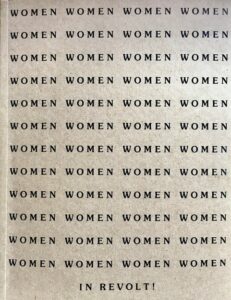Editorial

As protests arise worldwide, art as protest in former times bears examination. Our writers in this issue have responded, providing an illustrated history of protest art in recent museum and gallery shows in the US and UK. We begin with a review of “The Rosettis”, now at the Delaware Museum of Art after a run at the National Gallery, London, that awarded ‘at least equal prominence to the Rosetti women” (catalogue, “The Rosettis”) to the Sisterhood that wrote, drew, and painted alongside male artists. Jose Benitez questions where protest music has gone, and why it no longer accompanies protest today, providing a history of protest through the arts. By questioning, he might just propel music of the folk to rise again, and figure prominently in protests. “Women in Revolt”, documents the long and arduous journey, writing, printing, and producing across multiple genres, that women have taken to finally exhibit at the Tate Britain.
Championing Blacks in America, attacking with paint and brush, the Ku Klux Klan’s racially and politically motivated violence, and other horrors of the last century in the U.S., Philip Guston’s art inspired protests and ultimately change in the US. Victimized, with his exhibitions, including this postponed, and his art condemned, at one point causing him to leave the country and his gallery until things cooled down, Guston’s work and history, exhibited in a major show at the National Gallery, London and before that, the National Gallery in Washington, DC. is reviewed by Don Kimes. Elizabeth Ashe, reviewing “PABLO-matic”, defends Producer Hannah Gadsby in questioning Picasso’s prominence, prices at auction, and dominance of the Canon far beyond that deserved. Although he may have been a man of his times, this time is no longer his, and his place in the Canon is rightfully debated, challenged, and condemned.
“The Mother and the Weaver”, an exhibition of art by women from the personal collection of Ursula Hauser announces her representation of women artists, featuring the Spider of Louise Bourgeois from which the show takes its title. Showing work abstractly illustrating the birth process and mothers’ relationships with their children is a perfect exhibition for the Foundling Museum.
The museum shows art, and “tokens” left by mothers delivering their babies to the care of the Foundling Hospital, hoping to one day retrieve them. A revolt, though a quiet, peaceful selfless one, the plight and courageousness of mothers who left their children to be cared for and given the future they could not provide is illustrated by the art in the exhibition.
Hiroshi Sugimoto’s exhibition at the Hayward Gallery, London, “Time Machine” expresses an understanding and empathy with all things, our Earth, animal life, mankind, physical forms, ancient sculptured Boddhisatva’s, and the spectrum of light itself, with the not so hidden message that we must treasure what we have, to insure its survival. A quiet form of revolt, memorializing animal and human life, flashes of lightning not to be repeated, the seas of the world, Buddhas, keeps history and culture alive.
Liviana Martin writes of Jimmy Nelson’s photographic work, “Humanity” which documents his creative evolution, showing the cultural diversity of those photographed creating awareness of the risk of those indigenous groups and cultures disappearing. Like Sugimoto, Nelson employs photography to both memorialize and keep alive indigenous culture and people, photographically “protesting” their disappearance.
Daniel Nanavati’s Speakeasy calls Julian Spalding a maverick, a champion of drawing, but a thinker. As Spalding clues us in on the workings of museums and galleries and representation of artists, having served as Curator of the Gallery of Modern Art in Glasgow, he performs an important service. We must know how the system works to protest and change it, as women, anti-racists, environmentalists, humanitarians, pacifists, and artists always have and now do at prominent institutions, reviewed in this issue. Power to artists is power to the people, to challenge the societal norms and governmental edicts. We rely on creatives to show the possibilities inherent in forming our society and world, seeing, and correcting the ills. With kudos to those who speak and write, and show the way, we commend the institutions that make the work of creatives available for the public to see, hear and judge, forming opinions of their own and further influencing and participating, as active members of a changing world.

